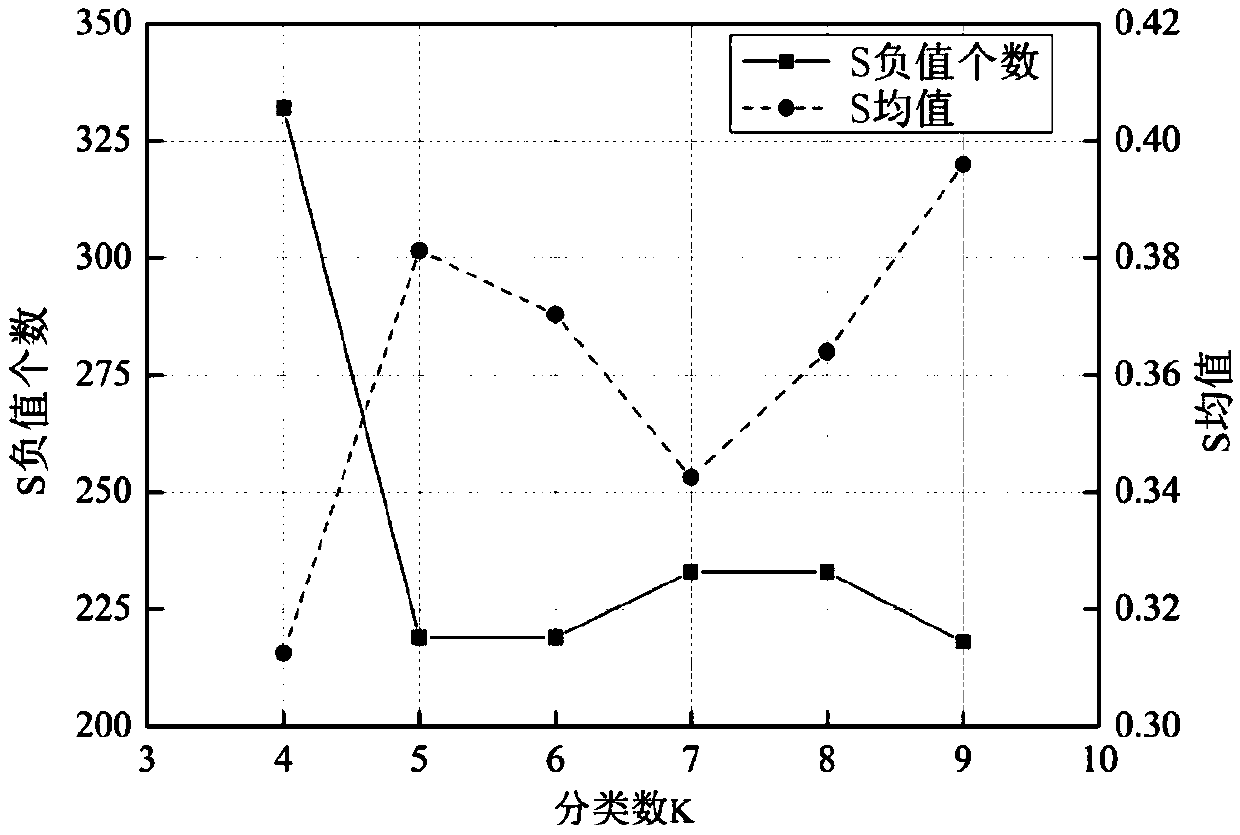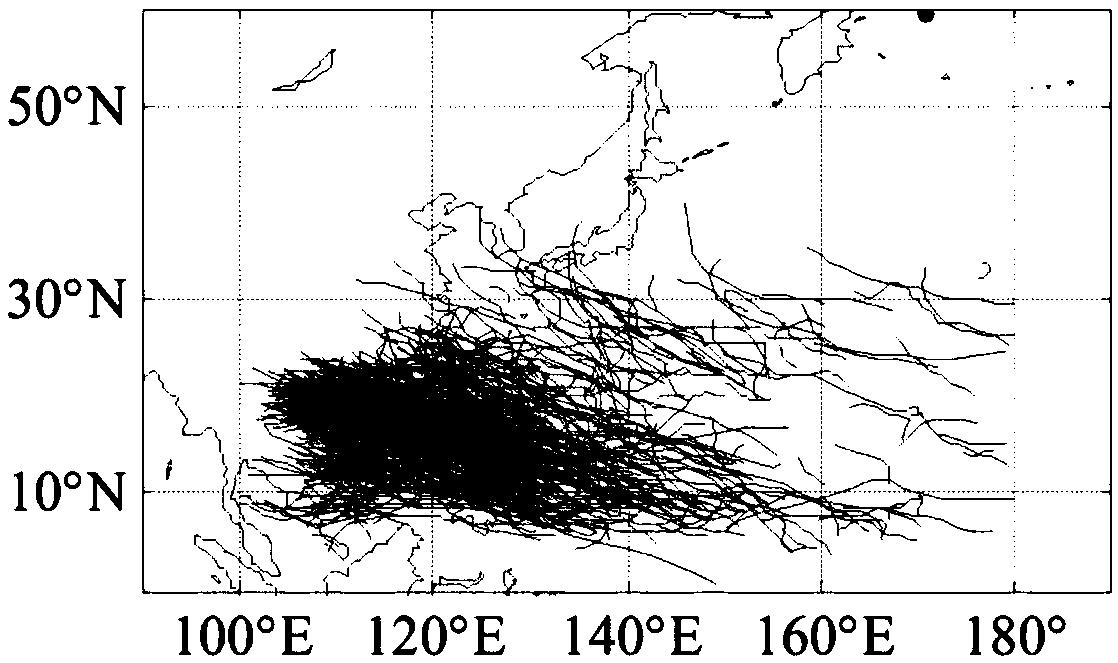An Objective Classification Method of Tropical Cyclones Based on Eigenfactors
A technology of tropical cyclone and characteristic factor, applied in instrument, calculation, character and pattern recognition, etc., can solve the problem of lack of theoretical basis for weight value
- Summary
- Abstract
- Description
- Claims
- Application Information
AI Technical Summary
Problems solved by technology
Method used
Image
Examples
specific example
[0082] In this example, the tropical cyclone (tropical cyclones, TCs) data comes from the China Meteorological Administration Tropical Cyclone Data Center (http: / / tcdata.typhoon.gov.cn / ), including TCs in the Northwest Pacific Ocean (including the South China Sea) from 1949 to 2013 The year, serial number, grade, latitude and longitude position every 6 hours, the average maximum wind speed (MSW) near the center of the bottom layer in 2 minutes and the minimum air pressure at the center, choose MSW≥10.8m·s -1 (TCs intensity up to tropical depression and above) and life history ≥ 24h 2079 TCs were used as research objects.
[0083] Step 1: Based on the historical data of tropical cyclones, calculate the physical indicators of tropical cyclones to realize the objective quantification of tropical cyclones.
[0084] The physical indicators of the tropical cyclone include the life history of the tropical cyclone, path length, displacement, path trend, straightness ratio, cumulative ...
PUM
 Login to View More
Login to View More Abstract
Description
Claims
Application Information
 Login to View More
Login to View More - R&D
- Intellectual Property
- Life Sciences
- Materials
- Tech Scout
- Unparalleled Data Quality
- Higher Quality Content
- 60% Fewer Hallucinations
Browse by: Latest US Patents, China's latest patents, Technical Efficacy Thesaurus, Application Domain, Technology Topic, Popular Technical Reports.
© 2025 PatSnap. All rights reserved.Legal|Privacy policy|Modern Slavery Act Transparency Statement|Sitemap|About US| Contact US: help@patsnap.com



